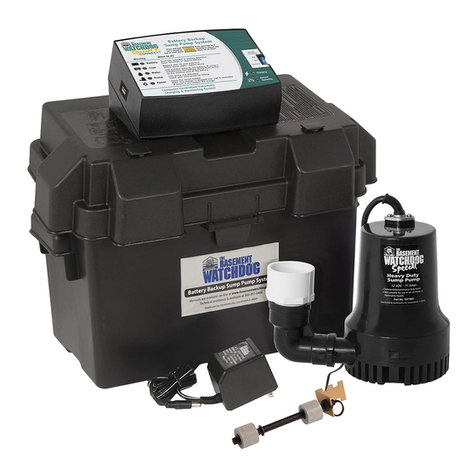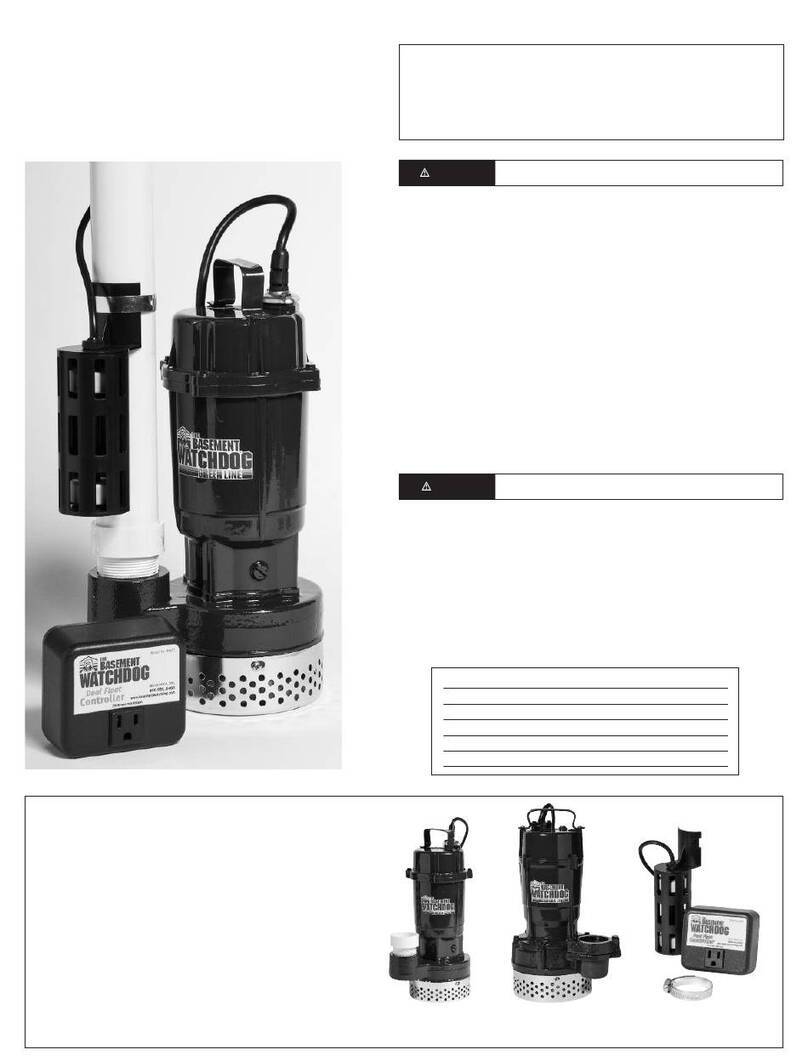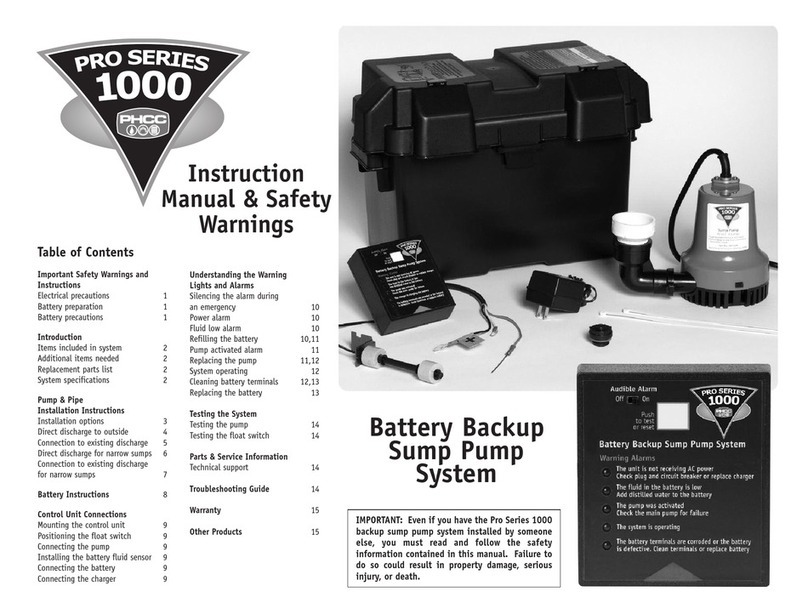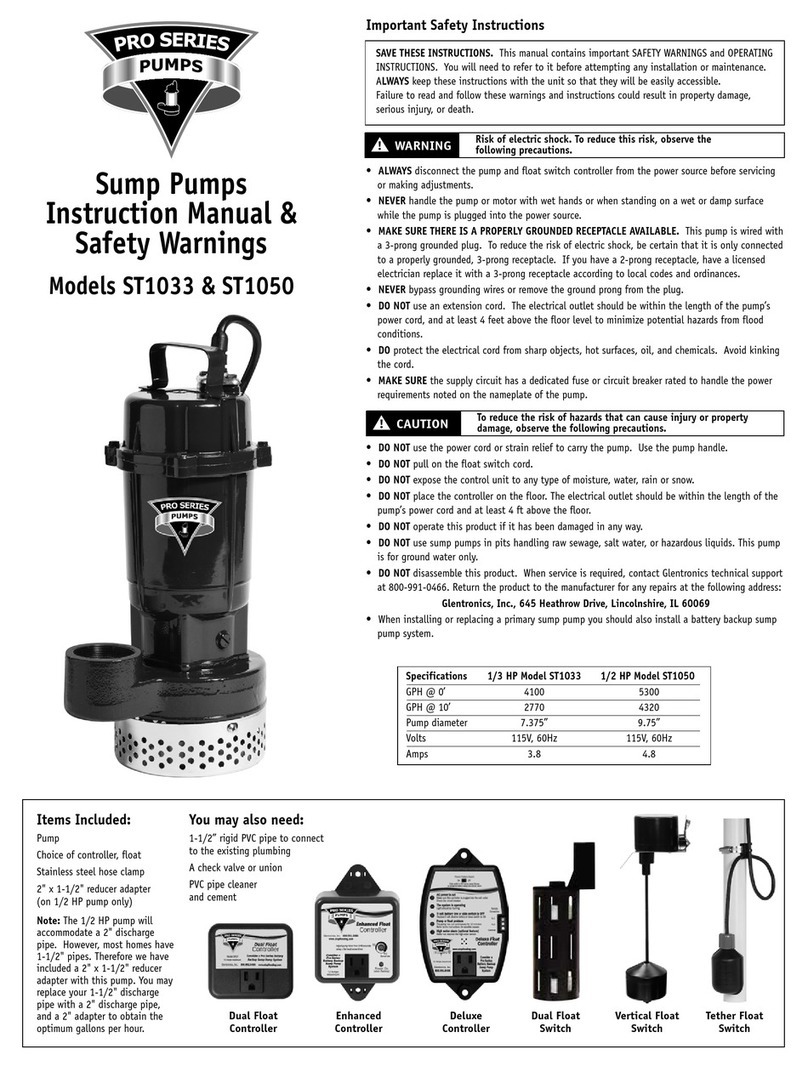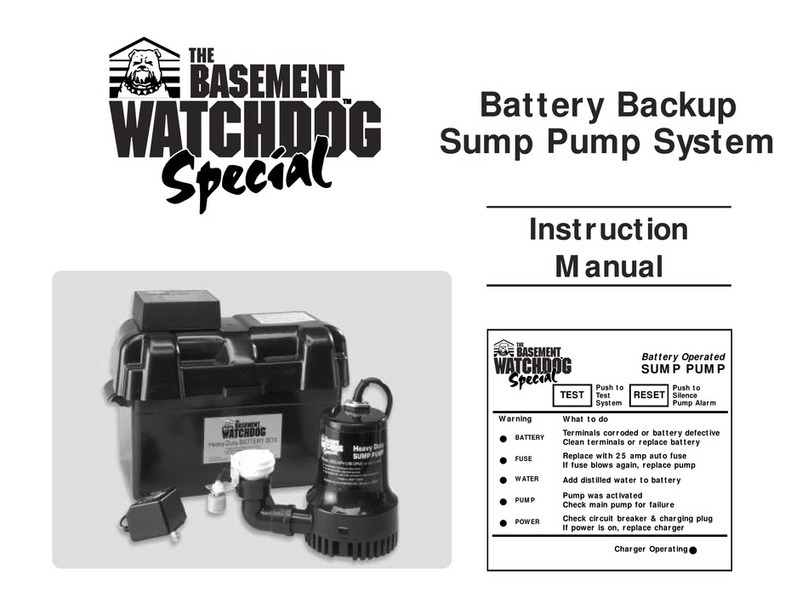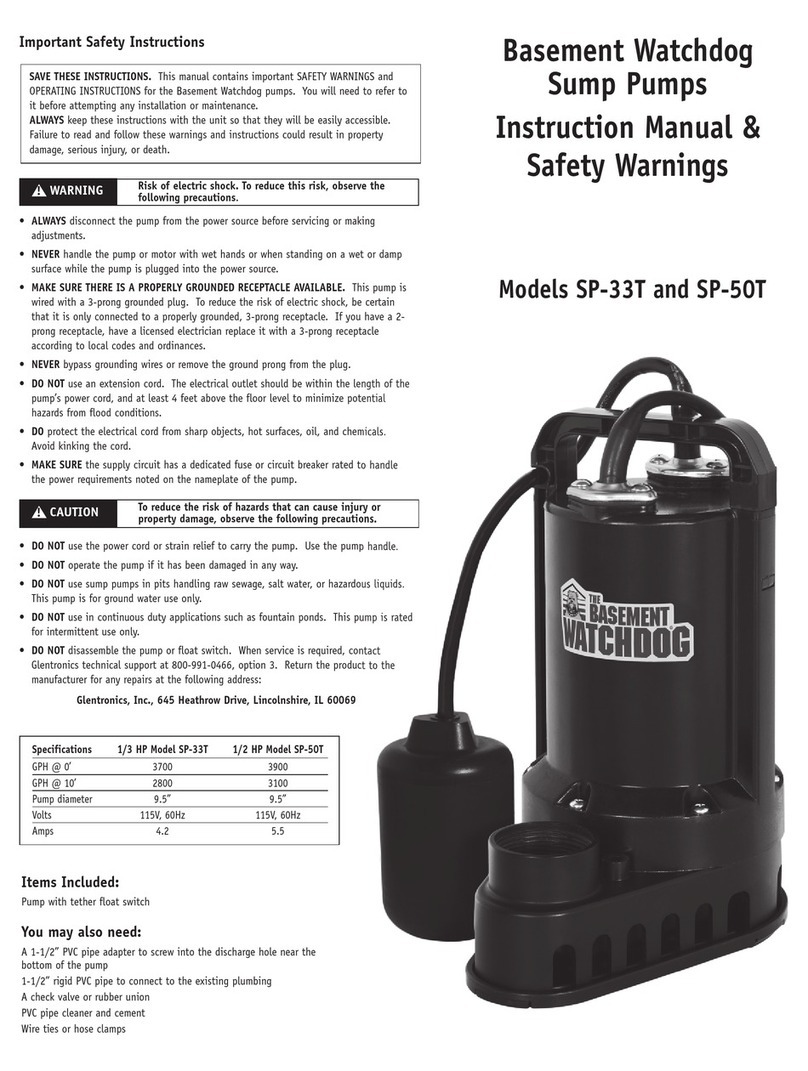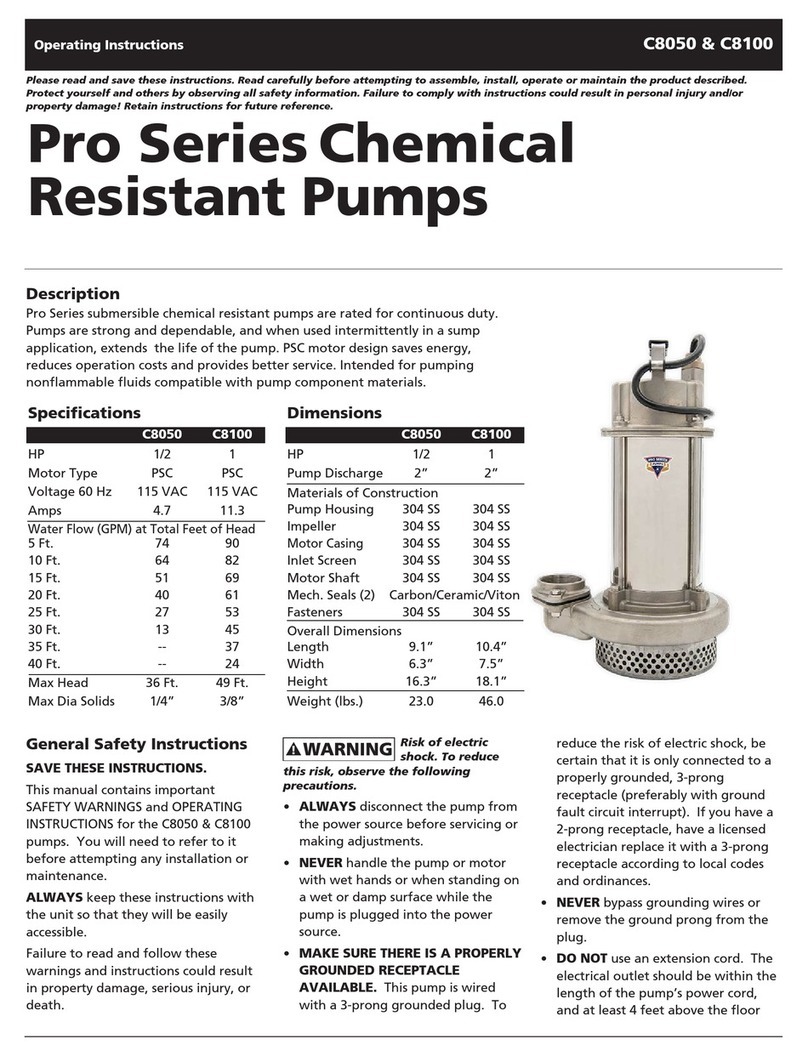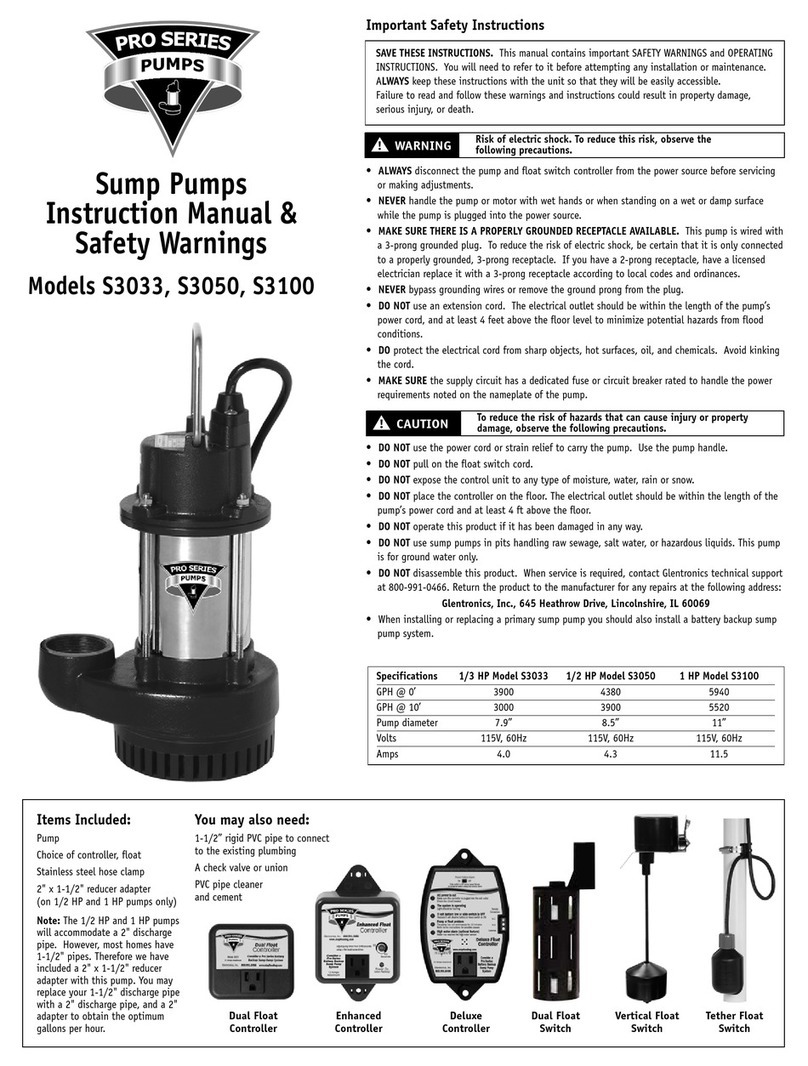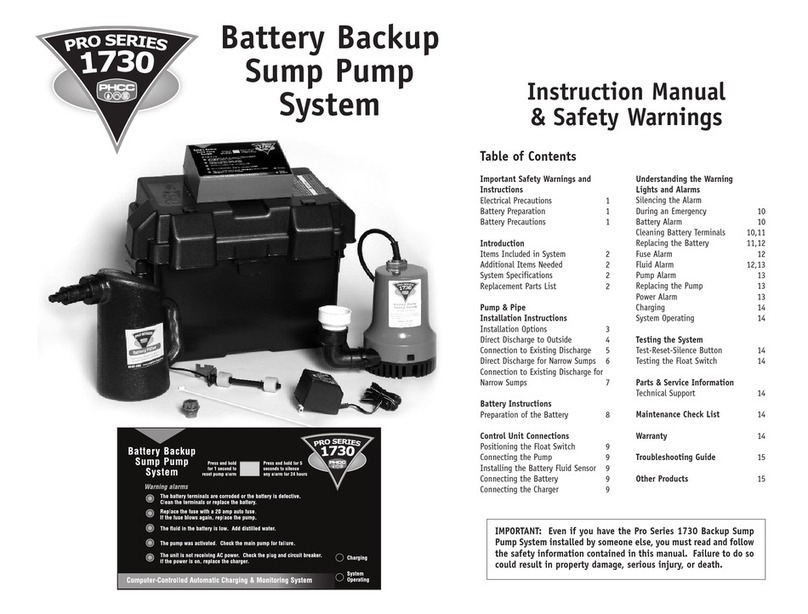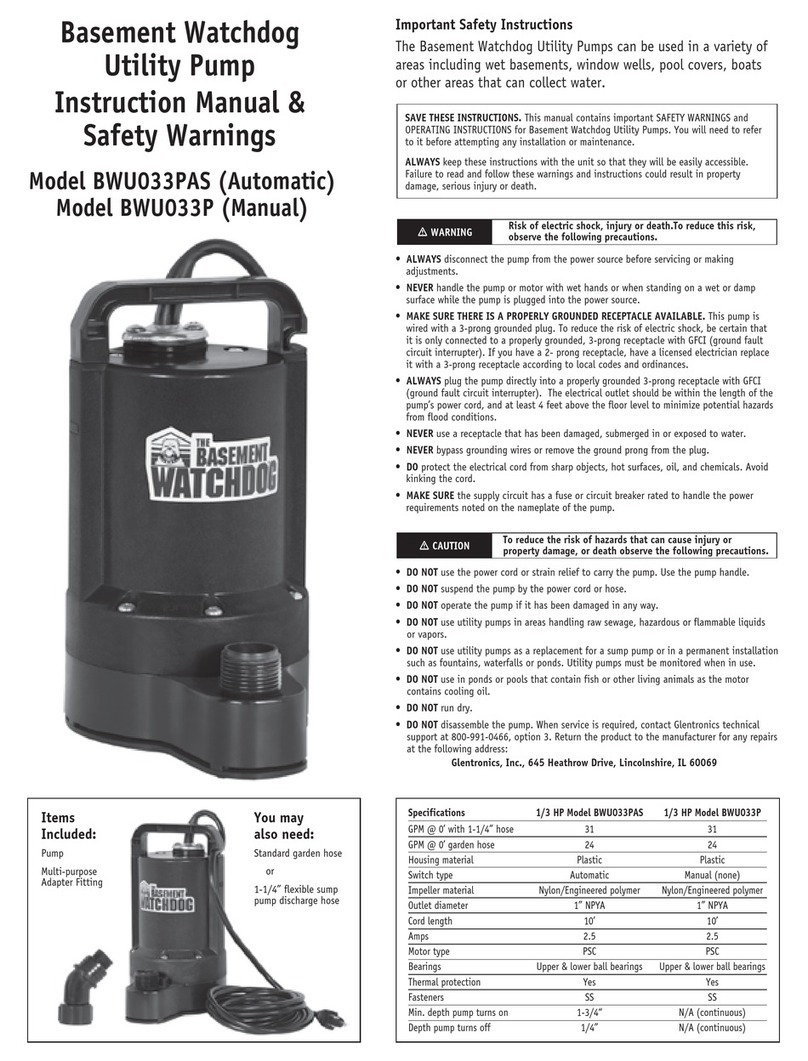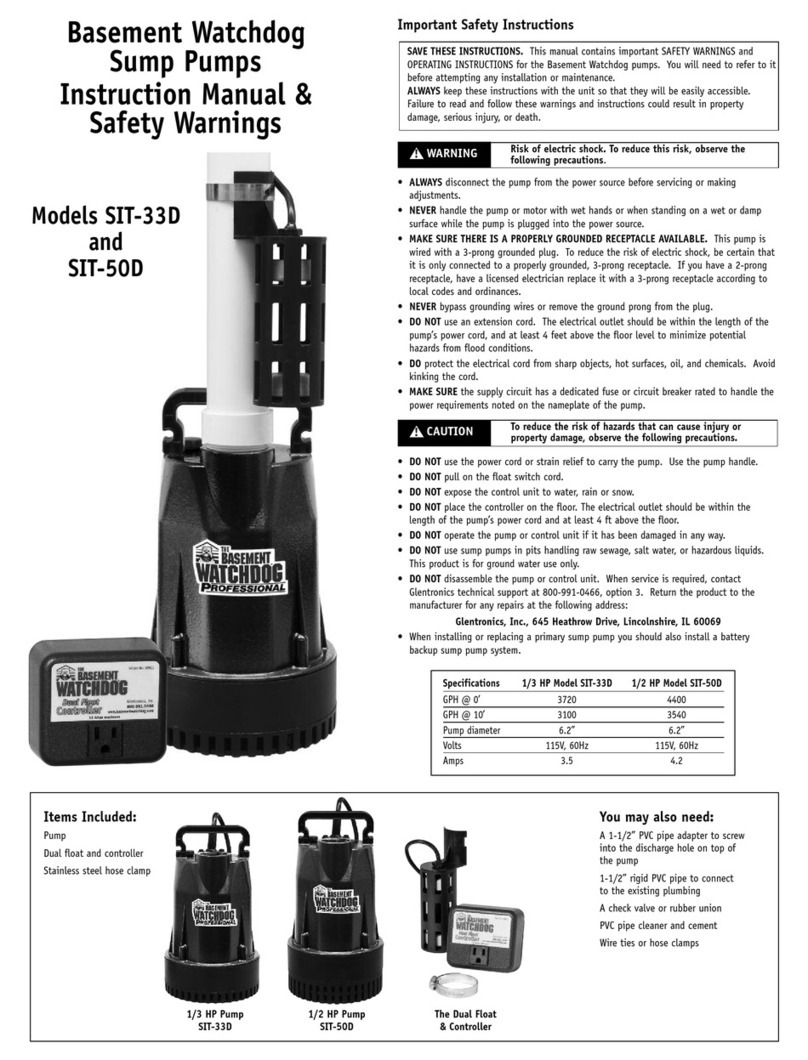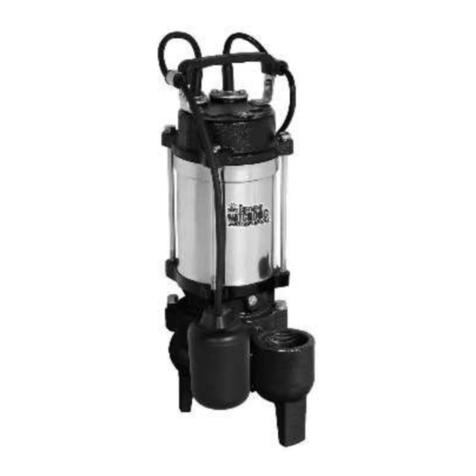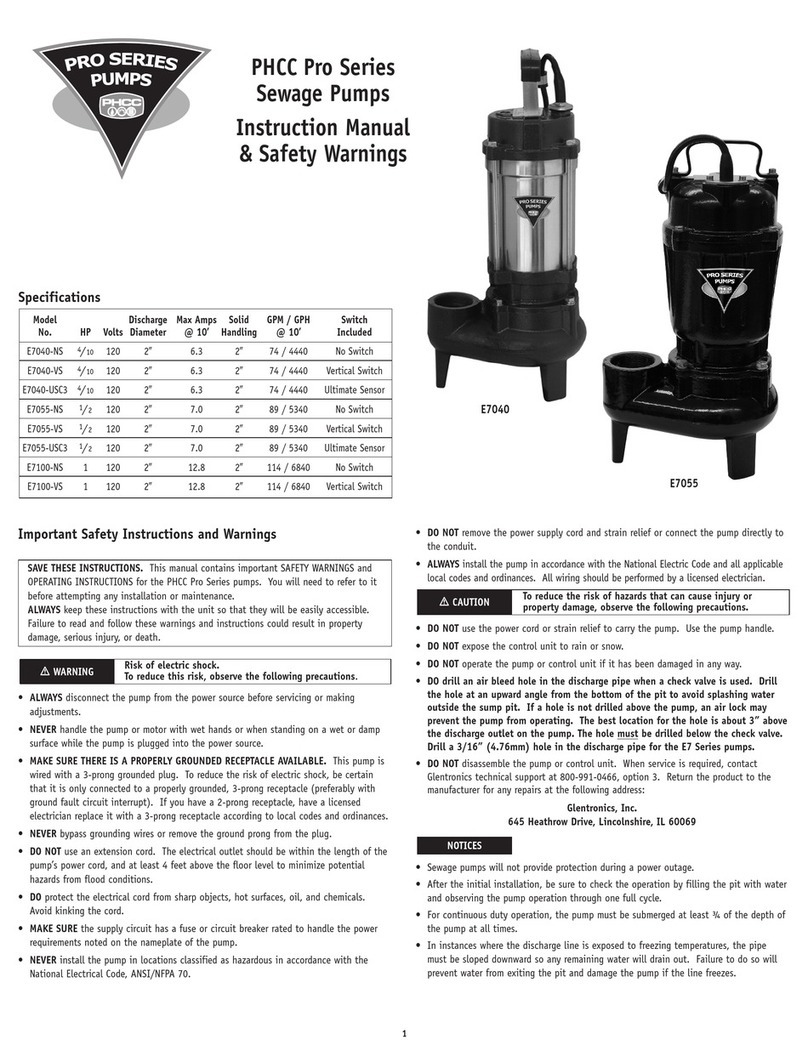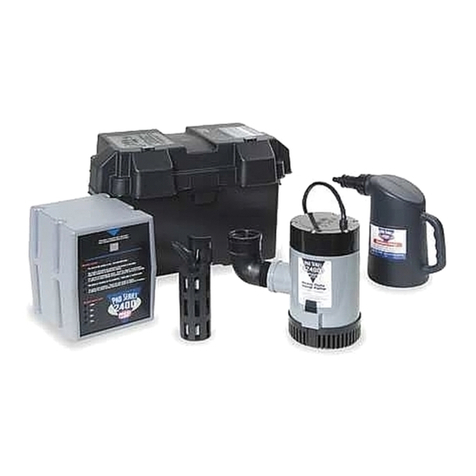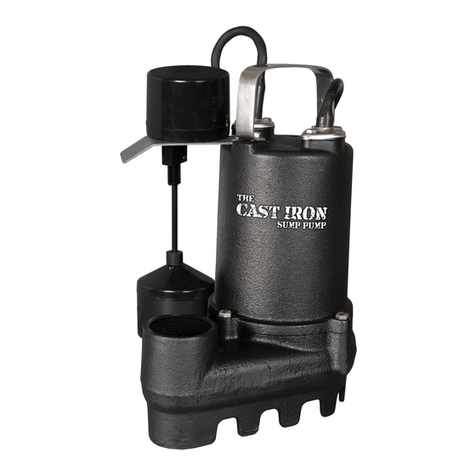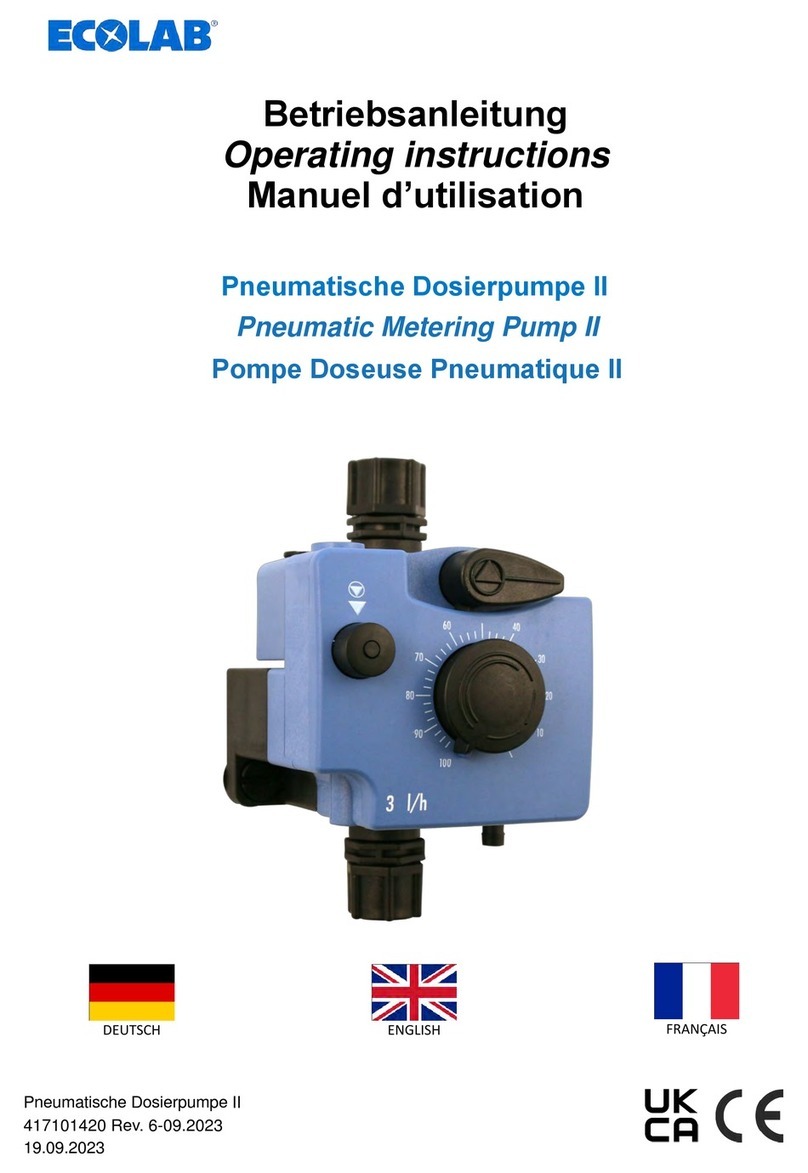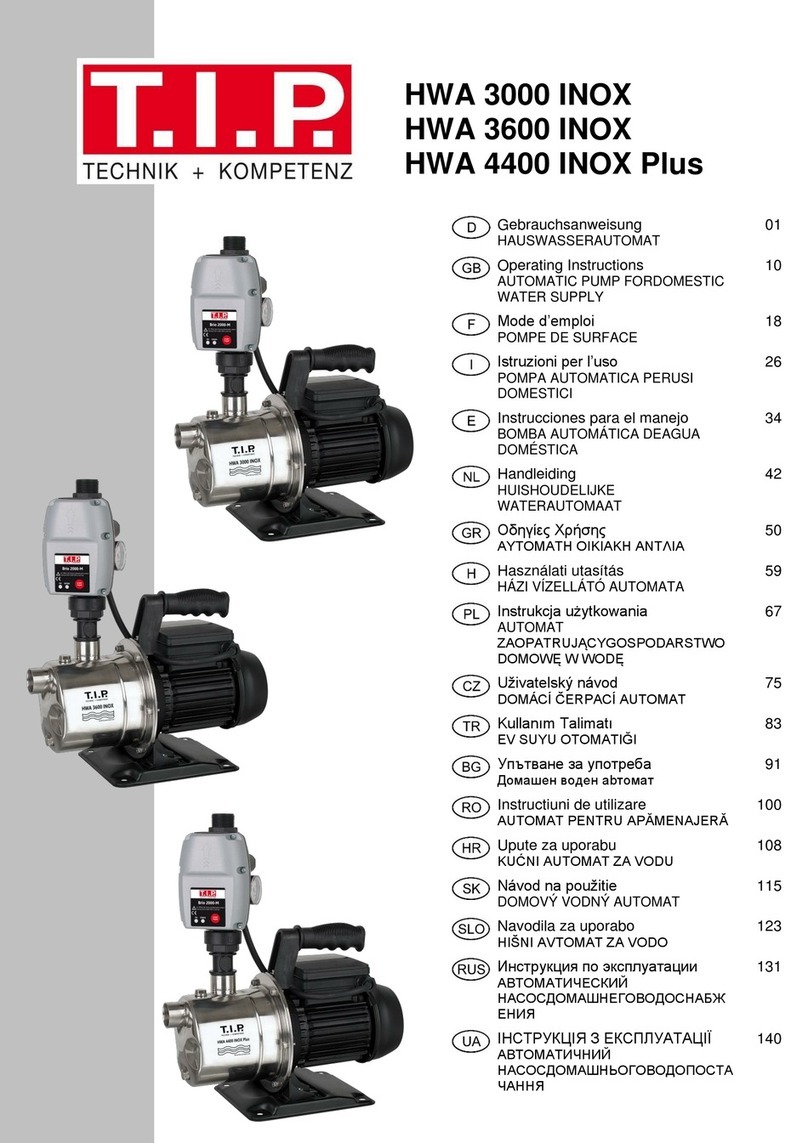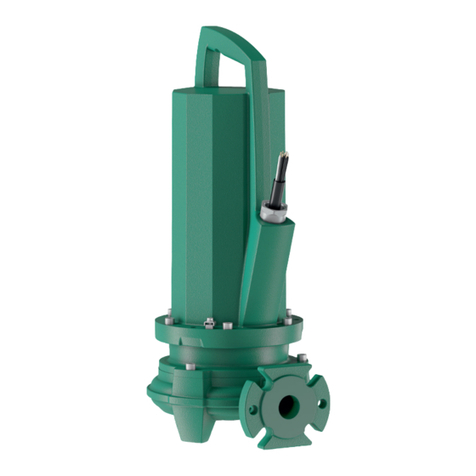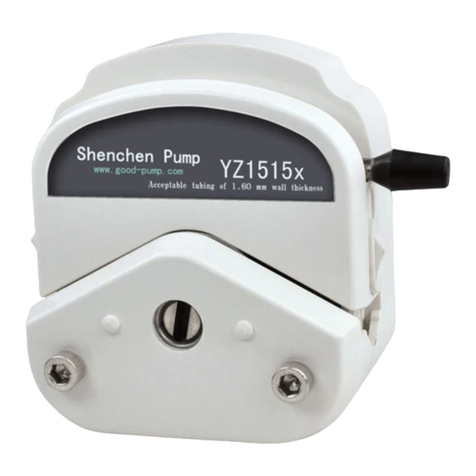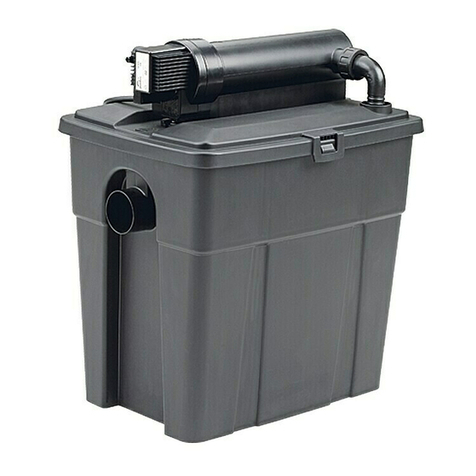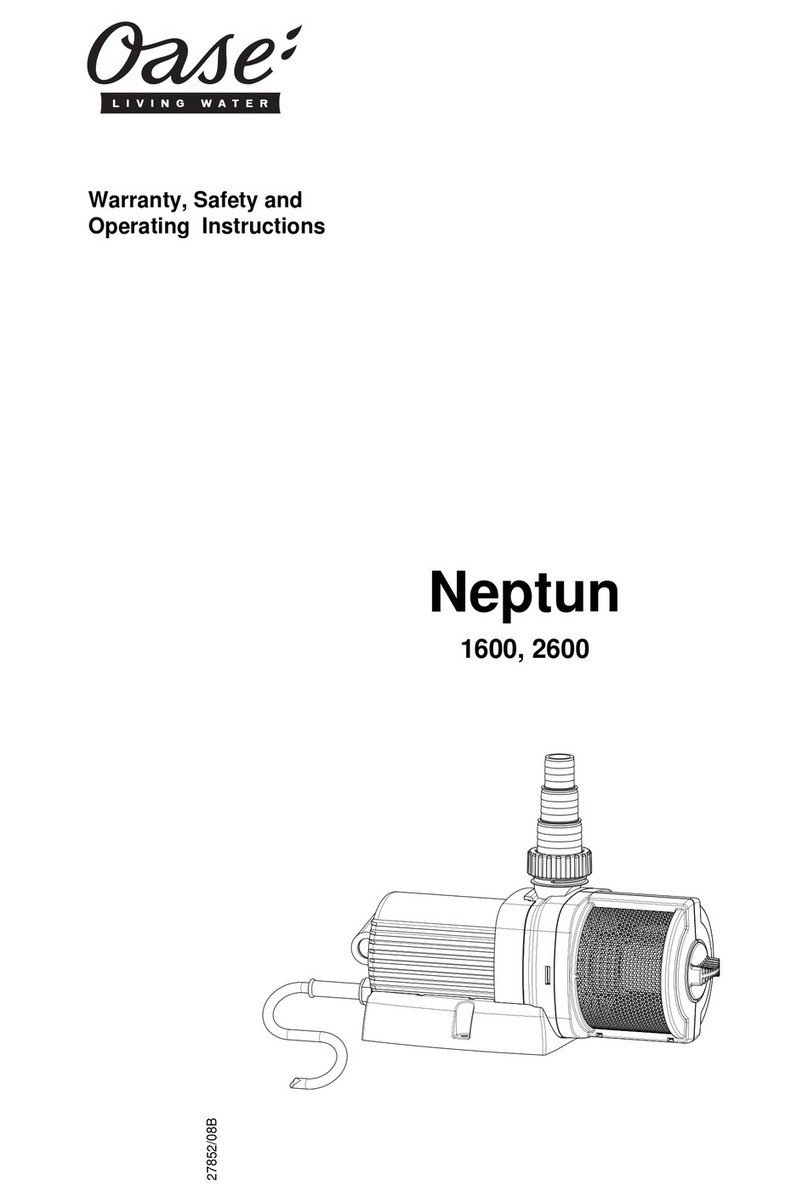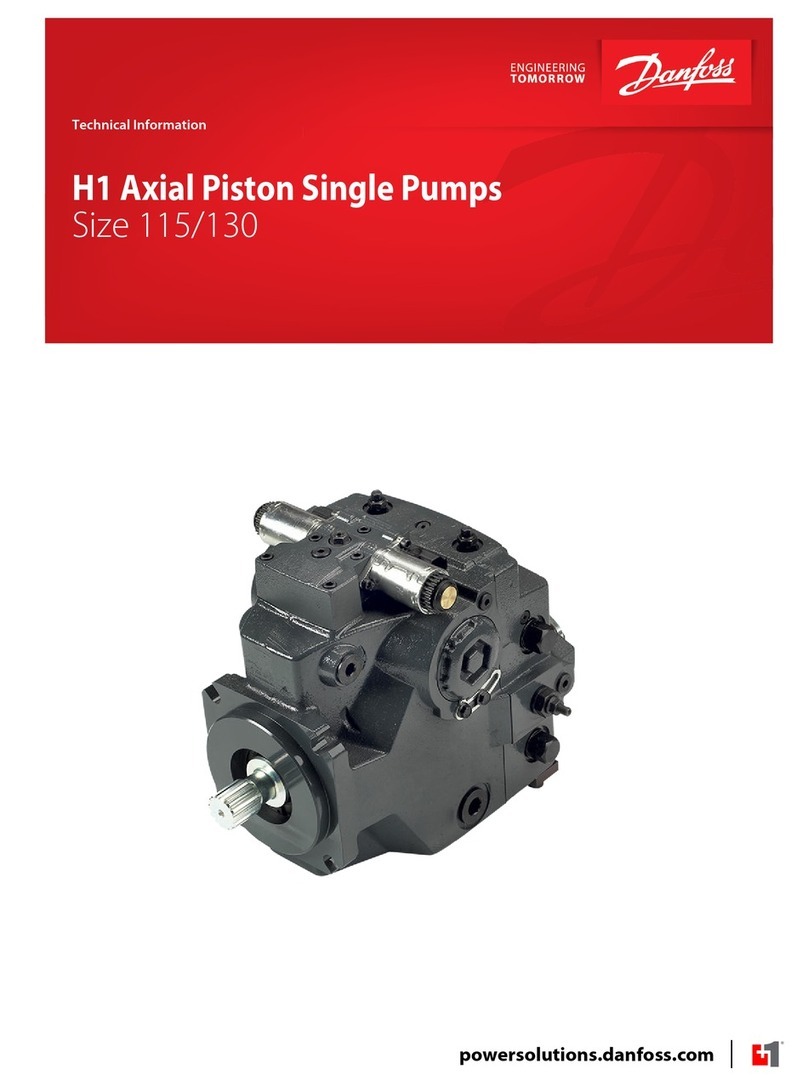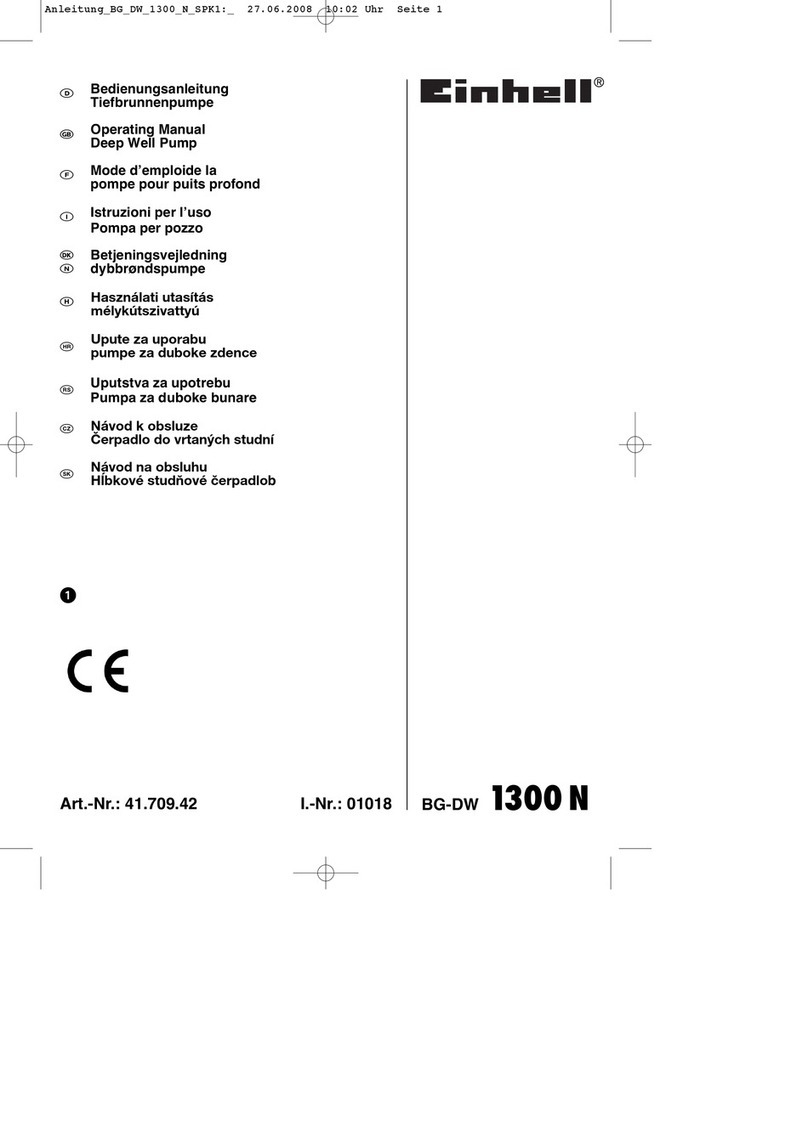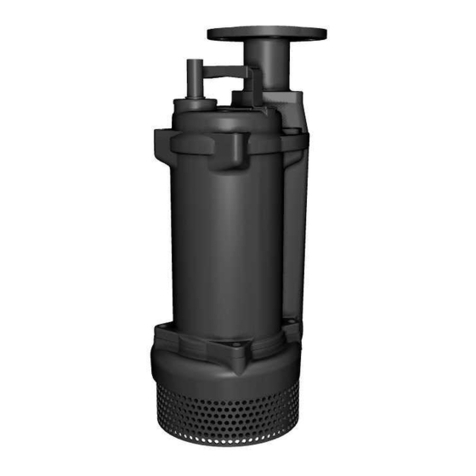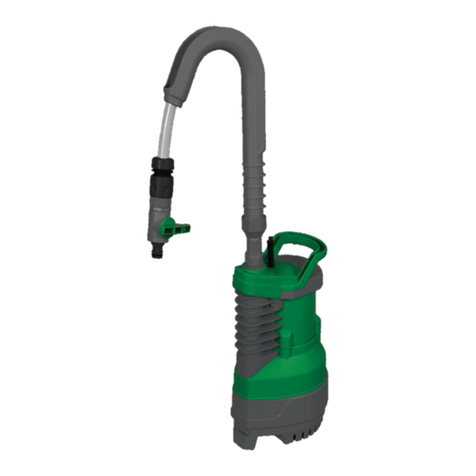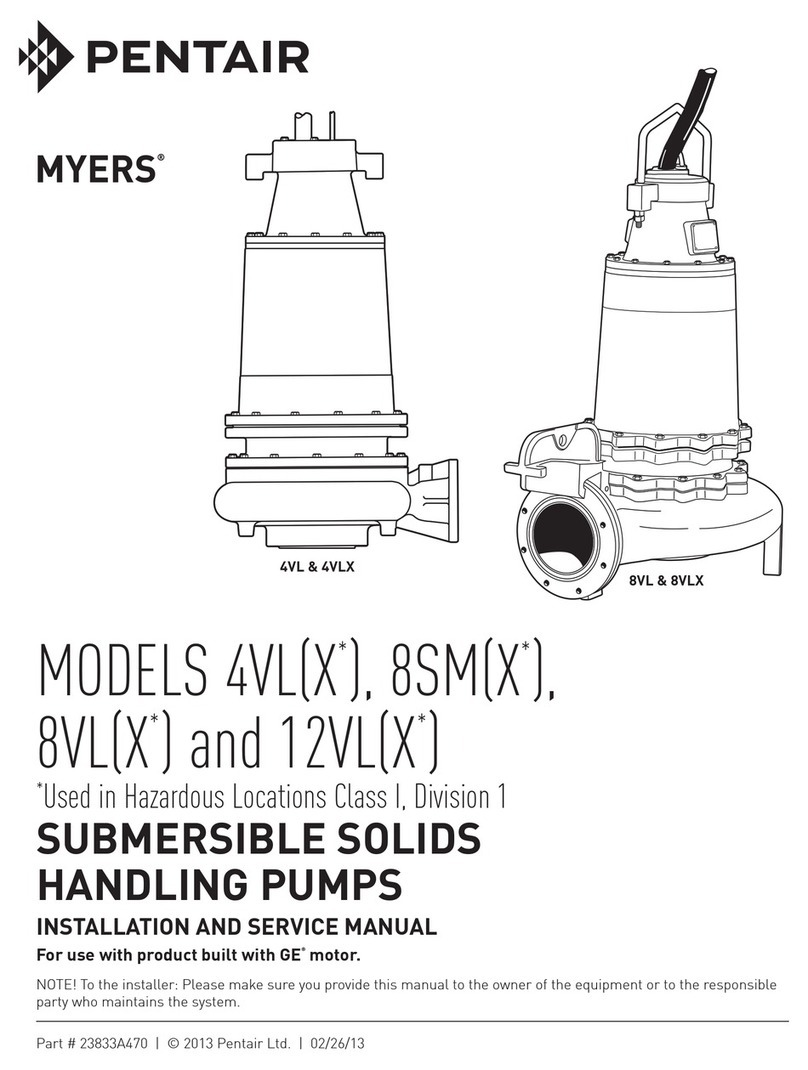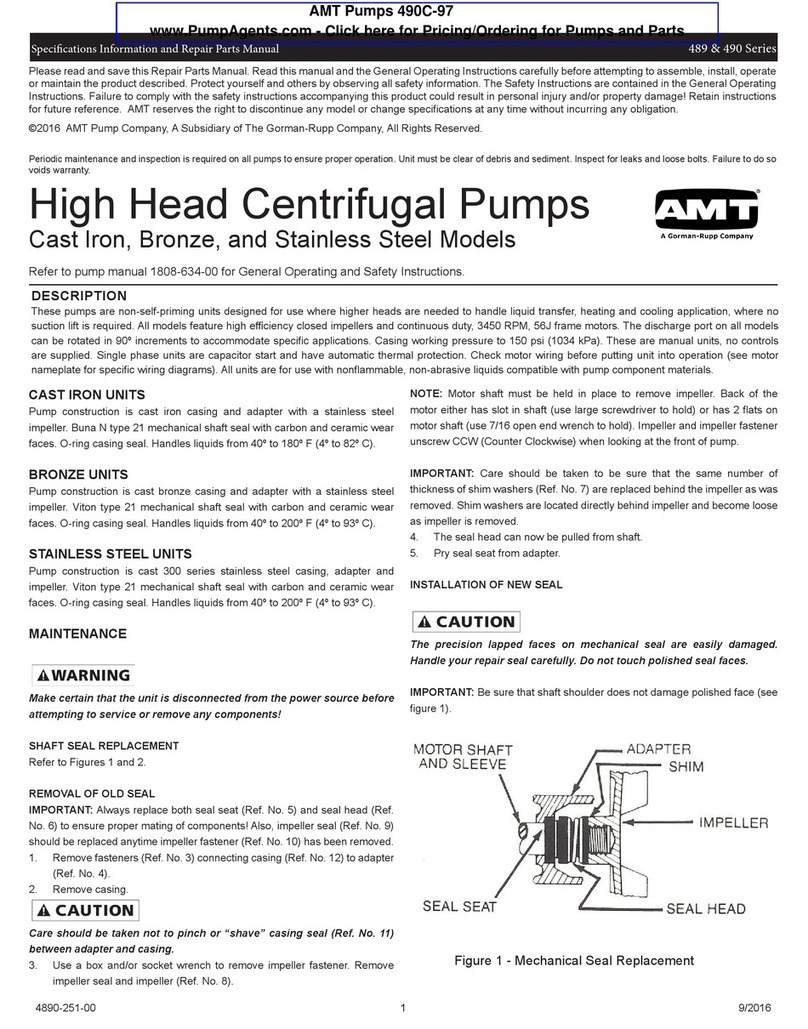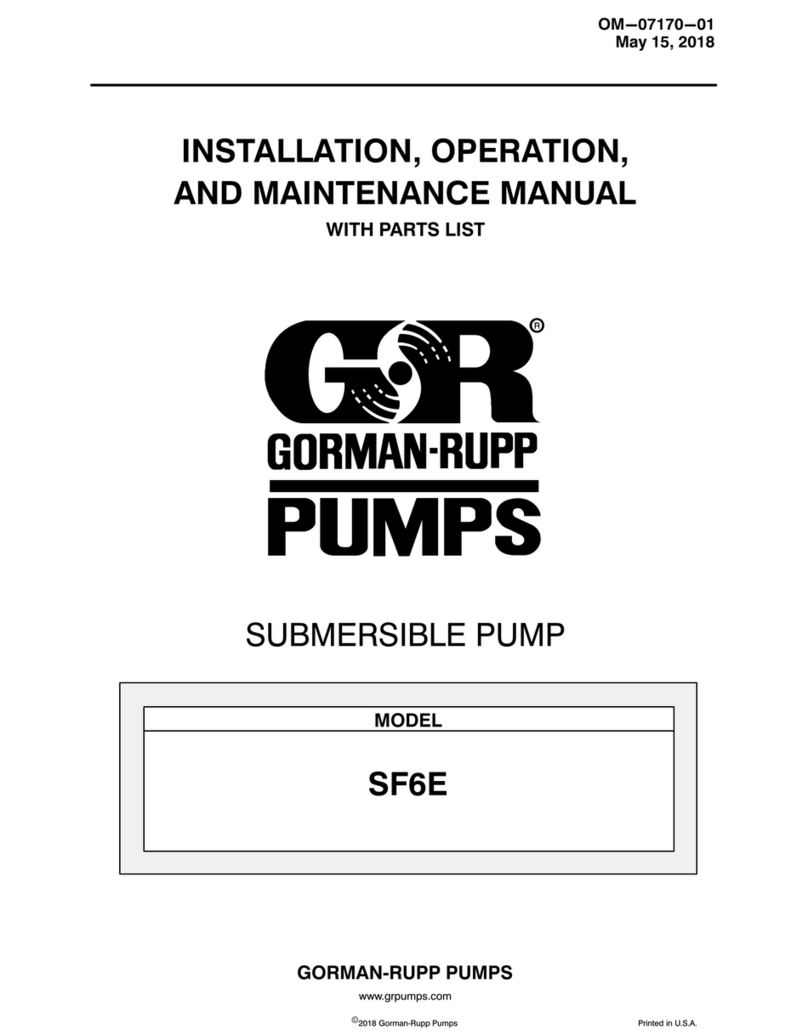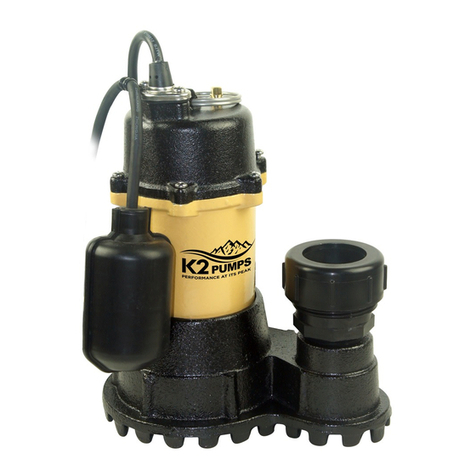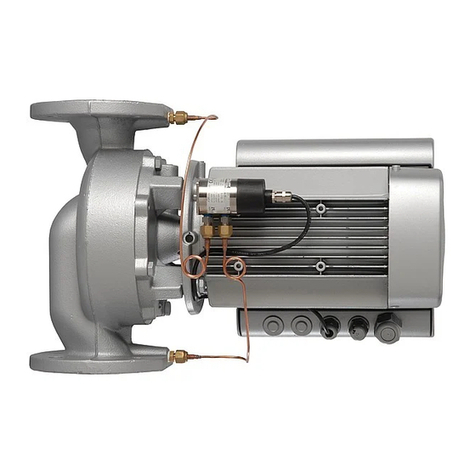
•When a check valve is used, a 3/16” (4.7mm) air bleed hole must be drilled in
the PVC pipe above the pump. Drill the hole at a 45º angle toward the bottom
of the sump to avoid splashing water outside the sump pit. Make sure the hole
is above the water line, and below the check valve. If a hole is not drilled
above the pump, an air lock may prevent the pump from operating.
•The pump must receive 115V AC +/- 5% and 60 Hz from the AC outlet.
•
•
This pump will not provide protection during a power outage. With the risk of
property damage from high water levels, the addition of a Pro Series battery backup
sump pump system is highly recommended.
After the initial installation, be sure to check the operation by filling the sump
with water and observing the pump operation through several full cycles.
•In instances where the discharge line is exposed to freezing temperatures, the pipe
must be sloped downward so any remaining water will drain out. Failure to do so
will prevent water from exiting the sump and damage the pump if the line freezes.
Installation Instructions
Prior to Installation
1. Visually inspect your pump. Products may be damaged during shipping. If the
product has been damaged, contact your place of purchase or Glentronics, Inc.
before installation.
2. Make sure the float switch bracket is level and the float switch and float switch rod
is straight.
3. Thoroughly read the instructions provided to learn specific details regarding
installation and use. This manual should be retained for future reference.
1.
2.
3.
Use a pit that conforms to all local codes
and is large enough to accommodate the
pump and float switch. The minimum
requirements for the 1/3 HP pump with the
vertical float switch are 9-1/2” in diameter
and 14” deep. However, larger sump pits
are preferred, since they will extend the
discharge cycle and reduce the number of
times the pump turns on.
Clean the pit of all debris. The pump’s
strainer must be kept clear.
The pump should not be set directly onto a
clay, earthen, or sand base. Install bricks
or blocks under the pump to provide a solid
base.
4.
5.
The pump should be level.
Install discharge plumbing according to
local, regional and state codes. Rigid PVC
pipe is recommended.
6. An in-line check valve is recommended to
prevent back-flow. This check valve is
mandatory when sharing a discharge line
with another pump (i.e. a back-up pump or
a second primary pump).
(a)
When a check valve is used, a 3/16”
(4.7mm) air bleed hole must be drilled in the PVC pipe above the pump.
Drill the hole at a 45º angle toward the bottom of the sump to avoid
splashing water outside the sump pit. Make sure the hole is above the water
line, and below the check valve. If a hole is not drilled above the pump, an
air lock may prevent the pump from operating.
7. Install a gate valve or ball valve if required by any codes.
8. The pipe must be positioned in a downward slope so any remaining water will drain
away. Failure to do this will prevent water from exiting
the pit and damage the pump if the line freezes.
9. If you are replacing an old sump pump:
(a)a nplug the pump from the outlet.
(b) Loosen the check valve or rubber union by unscrewing
the bottom hose clamp. (If the existing system is
installed without a check valve or rubber union, saw
the pipe apart above the sump pit.)
(c)
(d)
Remove the old pump and unscrew the pipe and adapter.
If the adapter fits into the new pump, screw the pipe into the pump. If not,
cut a piece of rigid PVC pipe and connect it to the new adapter by cleaning and
cementing the two pieces together. (Follow the instructions on the PVC cleaner
and cement.)
(e) Lower the pump into the sump by the handle.
(f) To avoid debris pouring onto the float, it should be positioned on the side
opposite of the drain tile. Note: It is desirable to have the vertical float below
the drain tile that empties into the pit (see Diagram A).
The vertical float switch
must be moving freely at all times. Make sure the float switch does not come
into contact with other pumps, wires, pipes or any other object that may be in
the sump pit. The float switch must not come into contact with the sump pit
floor or wall. If the float switch does not move freely the pump will not activate.
(g) Connect the pipe on the pump to the existing discharge pipe with a rubber union
or check valve and tighten the hose clamps securely.
Connecting the Pump
Plug the pump directly into a properly grounded, 3-
prong receptacle. If you have a 2-prong receptacle,
have a licensed electrician replace it with a 3 prong
receptacle according to local codes and ordinances.
For a neater installation, secure the power cords to the
discharge pipe with wire ties or hose clamps. Keep the
cords separated from each other on opposite sides of
the pipe.
Completing the Installation
1. After the initial installation, be sure to check the pump operation by filling the sump
with water and observing the pump through several full cycles. Note: When the pump
activates, it should have a “normal pumping” sound. Any abnormal sound, vibration, or
lack of output is the signal of a problem. Stop the pump and refer to the
troubleshooting guide.
2. Replace the pit cover making sure not to pinch or crimp the pump wire with the
cover. The pit cover either has a ‘hole punch’ that will allow the cord to be passed
through or one can be drilled in the cover.
Product Operation
Float Switch
The vertical float switch contains a single large float. Water will lift the float to the
top of the lift rod, raise the lift rod and activate the pump. As the pump evacuates the
water from the pit the float will drop to the lower float stop, lowering the lift rod and
turning off the pump. The position of the lower float stop is the “off-point”. The
pumping range can be adjusted by moving the lower float stop up lift rod. The lift rod
has several barbs to hold the float stop in place. DO NOT lower the float stop below
the top barb or it will prevent the pump from shutting off and the pump will run
continuously. The lift rod must be able to move freely up and down to turn on and
off the pump. The default position of the lower float stop is set for maximum pumping
range. This will allow for longer pumping cycles and extend the life of the pump. After
making any adjustments to the float stop be sure to check the operation by filling the
sump with water and observing the pump operation through several full cycles.
Maintenance Check List
Maintenance should be performed 1-2 times per year.
1. Remove all debris from the bottom of the pit and pump inlet screen.
2. Remove all debris floating in the water.
3. Remove all debris from the float switch
.
4. Fill the pit with water. Make sure pump turns on at the intended level.
5.
6.
While the pump is running, make sure pump is evacuating water at a good pace.
While the pump is running, make sure a stream of water is escaping from the air
bleed hole. If not, clear the hole of any deposits or debris.
NOTICES
WARNING
WARNING
This installation must be in accordance with the National
Electric Code and all applicable local codes and ordinances.
Make sure the outlet is single phase, 115V and 60HZ
for all the pump installations.
2
9B
9C 9D
Diagram A




